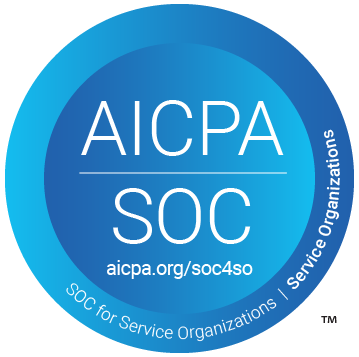When beginning a project, task or activity you have an end goal in mind. We have this idea in our head but there’s a long road between the initial idea and the end goal. For example, I love baking, whether it’s cookies, cakes or pastries, I love to create something that my friends and family will enjoy.
When you bake a cake, you start by planning out the ingredients, what flavor you want, the shape, size and finally how it should be decorated. You think about the type of frosting you want, whether buttercream or cream cheese (my personal favorite) and also if you want to get fancy with the piping or keep it simple. Once the cake is completed you sit back and quite literally take in your results.
The same can be said for building and executing a direct marketing campaign. You have a goal to acquire new customers. You plan the audience, the channel, artwork, etc. These components are prepared prior to the “baking” or execution of the campaign. But, when the time comes to sit back and measure your results, are you able to get a clear understanding of success?
This question is often a part of larger discussions I have with my clients around direct marketing campaign performance and trackability. I find especially with new direct marketing campaigns, components such as artwork, format and audiences are prioritized over the call-to-action or measurement of response. While it is important to talk about success indicators for the campaign, it is equally crucial to understand how they will be captured.
One way to capture information is through leveraging the Call-to-Action (CTA) and the offer that will appear on the mail piece to direct the consumer to transact in a meaningful way. The CTA is the desired end goal, like “Shop with Savings” or “Call Today!”. Whereas the offer lends itself to the hook or rather, the tracking component.
Think of it this way, if you are offering 50% off your first month’s membership but you include no indication of where or how the consumer can activate that offer, you end up creating a poor user experience with no way of measuring response. All of your planning and budget will be lost without knowing how to properly attribute results.

This is where a relevant CTA and offer can help guide the consumer and also provide you with measurable results. Below dives deeper into some trackable CTA and offer examples for a direct marketing campaign:
- Unique URLS –Utilizing a unique URL for the campaign provides a real-time view of traffic going to your website. This uptick in traffic can be correlated to the recipients of the direct marketing piece. URL’s provide insight into top-of-funnel activity. The URL should not be so long that it gets lost in the creative or hard to type in. Using words such as “save” or “offer” in the URL help to emphasize the intended promotion.
While having a unique URL can be important, know that the consumer may not use that URL. Their path may lead them directly to the homepage versus the dedicated landing page created for the campaign. If adding a unique URL is a must to measure response, try and be as clear as possible that the offer can only be used at that specific location.
- Offer Codes – If you are including any sort of offer, having a unique code will provide results that can be directly attributed to that channel. This code can be unique for the campaign or person. Provide an offer that is specific to the campaign versus an offer that could be easily found online or on the homepage. The offer should not be lower than what can be found on the website. If that is the case, it can take away from the potential responses from the campaign or even create a poor customer experience. When using direct marketing tactics, it is important to provide a feeling of value.
Having an offer can help to push response however being overly promotional can lower brand perceptions or inhibit responses from prospective customers. If there is constantly an offer or promotion on the site then adding another offer on top of that may lower the sense of urgency to respond. Maintaining a promotional calendar or planning out yearly promotions will help when planning other marketing campaigns throughout the year.
- QR Codes – With QR codes becoming more widely used in places like restaurants and event centers it’s only a matter of time before we start seeing more of them in direct marketing campaigns. The nice thing about these codes is that they can be unique and trackable, so you can understand if people are using them or not.
Think about a QR code as an experience. The user needs to get more benefit from scanning that black and white square than simply if they were to search for your website for the same information. Also, clearly call-out what that benefit is on the mail piece, that way they know what they should see when they open up the camera on their phone. Doing these things can help increase the likelihood of someone scanning and thus increasing response.
- Phone Numbers – There are some companies where inbound calling is an important part of the marketing funnel. When this is the case, providing a dedicated phone number to the direct marketing campaign can help two-fold. It can help understand response, since that phone number is campaign specific and should be able to be trackable at the call-center. Also, the unique phone number provides additional information to the call center because the representative will know which campaign the caller is coming in from.
The downside of having a phone number on the mail piece can be, depending on the audience, that people are becoming more averse to making phone calls. If you are seeing this in your campaigns currently, try testing a different CTA or method of response. If you can make sure both are trackable then you can work to understand the best channel for your customers.
I imagine there are some people reading this thinking about how response can be measured if someone did not come in through the designated CTA. While post campaign matchback isn’t necessarily included on any physical piece, think of it like the icing on top of a cake.
- Post Campaign Matchback -. Speedeon offers as part of its campaign management service post campaign matchback reporting. This analysis entails taking in your customer file for the duration of the campaign. Speedeon then uses its processing capabilities to match your customer file to the mail file. This is especially useful to understand if someone responded to the campaign outside of the intended channel. Post campaign matchback provides additional layers into response as well as deeper understanding into control or holdout groups that might have been selected.
This additional layer of reporting pulls it all together. You combine the trackability of the CTA with a holistic matchback process, identifying both trackable response customers and customers who were mailed but went outside the indented method of response.
Going back to the cake example (because who doesn’t love cake), isn’t it satisfying to take a step back and look at the creation you made? Remember, the real enjoyment comes after you sit down, cut into the cake and take a bite. So, whether it be a new direct mail or an email acquisition campaign, properly tracking results and having a post campaign plan means that you finally get to enjoy the hard work you put into it.
Liked this post? Check out this one on the 10 Do’s and Don’ts for Direct Marketing Campaigns.

